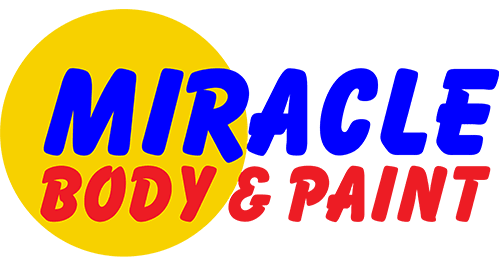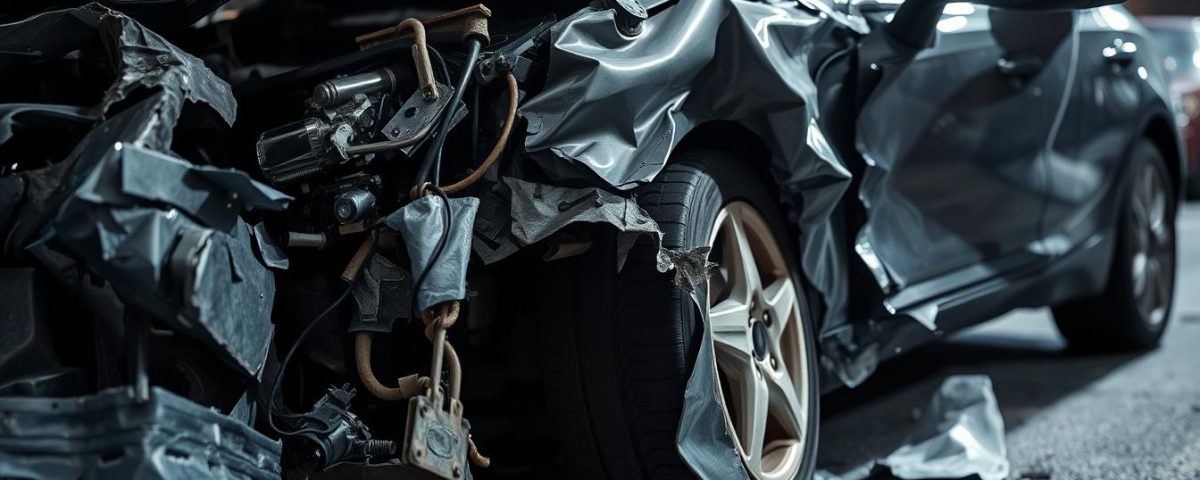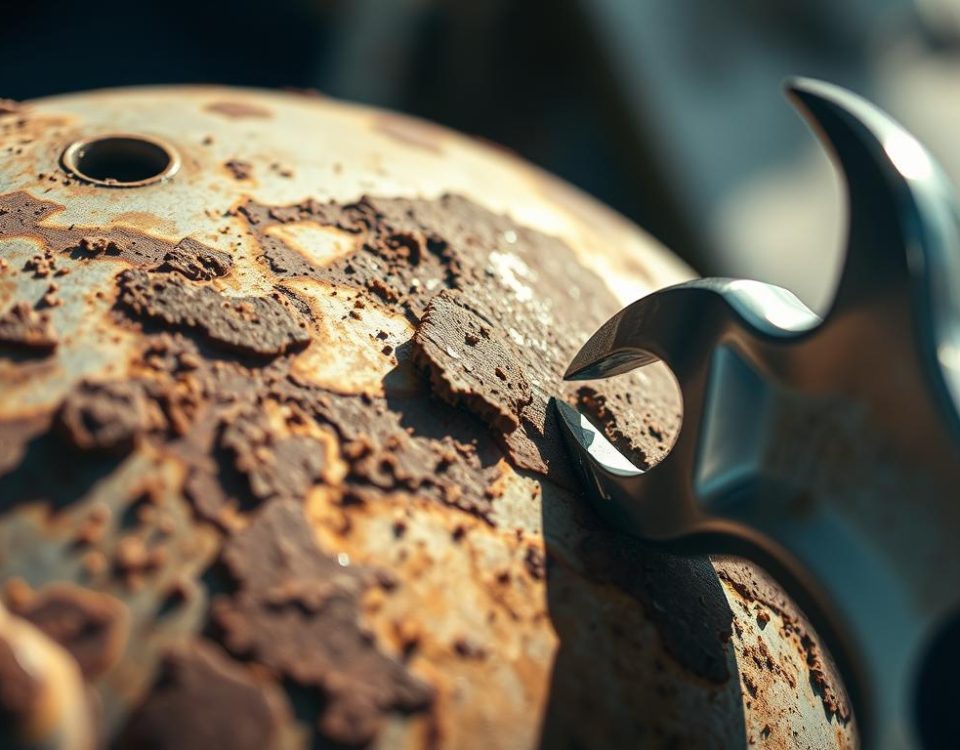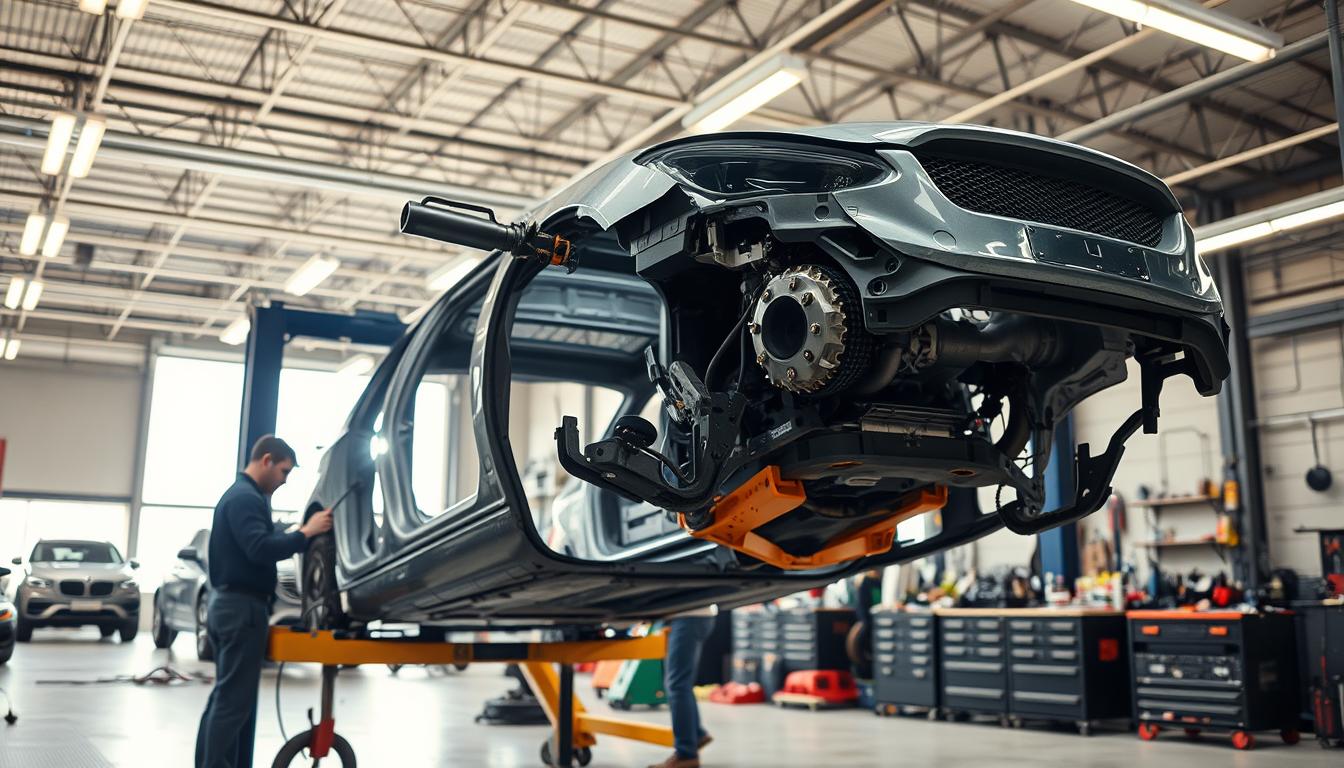
How to Fix a Bent Frame After a Collision
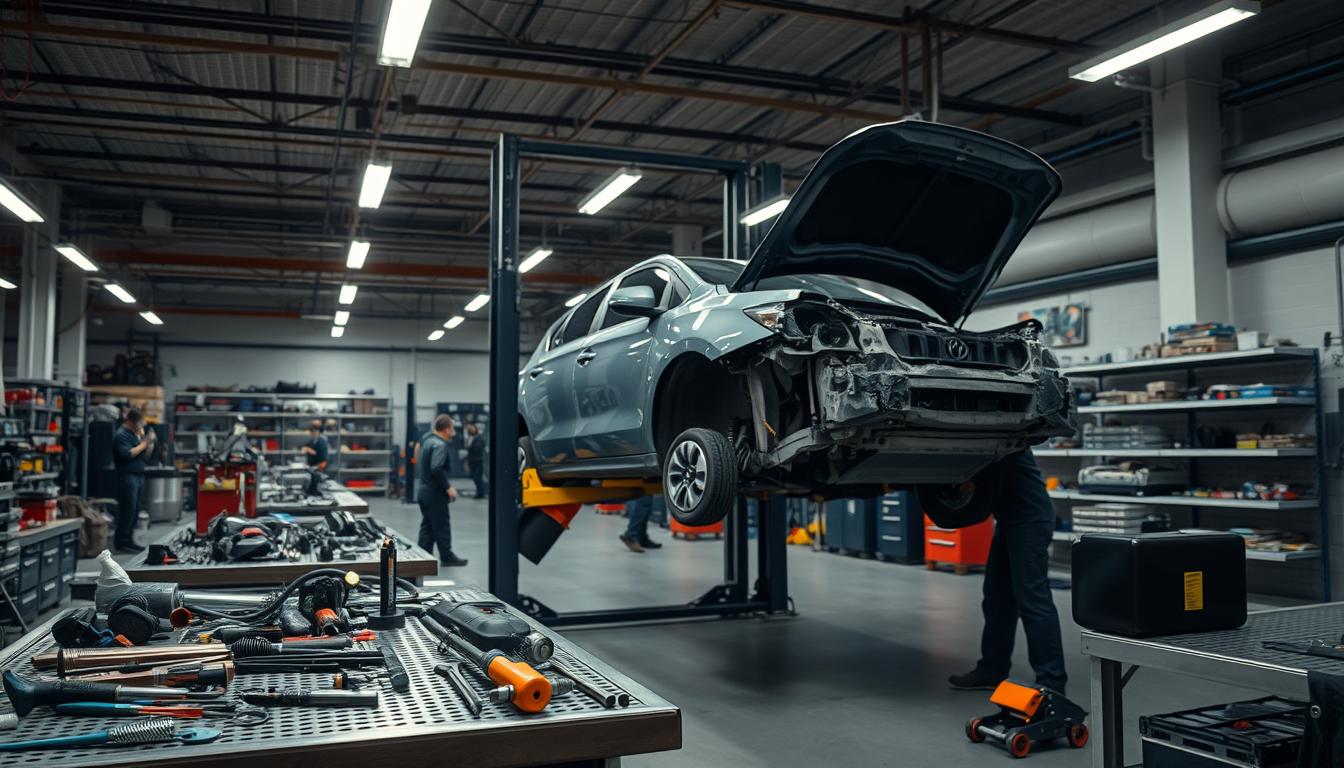
A Beginner’s Guide to Understanding Auto Body Repair
Vehicle collisions are an unfortunate reality on the roads. According to the National Highway Traffic Administration, rear-end collisions are the most frequent type of collision. When such incidents occur, understanding the extent of the damage to your vehicle’s components is crucial.
Assessing collision damage is vital to determine the necessary repairs. This is where professionals like those at “Miracle Body and Paint” come into play, offering expert services to restore your vehicle to its original state.
Key Takeaways
- Rear-end collisions are the most common type of vehicle collision.
- Understanding collision damage is crucial for effective repairs.
- Professional auto body repair services are essential for restoring your vehicle.
- “Miracle Body and Paint” offers expert collision repair services.
- Proper assessment of damage ensures thorough repairs.
Understanding Vehicle Damage in a Collision
Understanding the damage caused by a collision is crucial for vehicle owners to navigate the repair process effectively. At Miracle Body and Paint, we emphasize the importance of a thorough assessment to identify all areas of damage.
Types of Collisions
Collisions can be categorized into several types, including head-on, rear-end, side-impact, and rollover collisions. Each type of collision results in different patterns of damage to the vehicle.
The National Highway Traffic Administration provides data that helps in understanding the dynamics of various collisions and their impact on vehicles.
Common Areas of Damage
Major collisions generally result in extensive damage, commonly affecting the front-end, center, and rear-end parts of the vehicle. The extent of the damage to these areas can vary based on the type and severity of the collision.
- Front-end damage often includes the bumper, grille, and hood.
- Center damage can affect the doors, floor pan, and structural components.
- Rear-end damage typically involves the rear bumper, trunk, and rear panel.
Signs of Hidden Damage
Not all damage is immediately visible after a collision. Signs of hidden damage include uneven tire wear, misaligned doors or hoods, and unusual noises while driving. It’s essential to have a professional inspection to identify any hidden damage.
A comprehensive assessment by professionals, like those at Miracle Body and Paint, ensures that all damage is identified and addressed, facilitating a more effective repair process.
The Impact on Car Parts
The force of a collision can have far-reaching consequences for a car’s parts and overall structure. When a vehicle is involved in an accident, various components can be damaged, affecting the car’s safety, performance, and overall value.
Frame and Structure
The frame of a vehicle is its backbone, providing the structural integrity that supports all other components. In a collision, the frame can be bent, twisted, or cracked, leading to issues with alignment and potentially causing uneven wear on other parts. Damage to the frame can compromise the vehicle’s safety and handling.
Inspecting the frame and structure after a collision is crucial. Professionals use specialized equipment to check for any signs of damage, such as misaligned or bent frame rails.
Suspension Components
The suspension system, which includes parts like shock absorbers, struts, and control arms, can also be affected by a collision. Damage to suspension components can lead to a rough ride, uneven tire wear, and reduced vehicle stability. In some cases, the damage might not be immediately apparent, making a thorough inspection vital.
Common signs of suspension damage include vibrations while driving, uneven tire wear, and a noticeable drooping or leaning of the vehicle.
Engine and Transmission
The engine and transmission are critical components that can be damaged in a collision, especially if the impact is severe. Damage to these parts can result in costly repairs and potentially leave the vehicle inoperable. The engine mounts, transmission mounts, and associated components like the radiator and cooling system can also be affected.
A thorough inspection by a professional mechanic is necessary to assess any damage to the engine and transmission. They will check for signs of leaks, misalignments, or other issues that could indicate damage.
Assessing Damage Post-Collision
Assessing damage post-collision is a crucial process that helps determine the extent of the damage and the necessary repairs. After a collision, it’s essential to have your vehicle inspected by professionals to identify any potential issues.
How Professionals Inspect Vehicles
Professionals inspect vehicles by checking for signs of hidden damage, such as leaking fluids, check engine lights, and steering problems. They use specialized equipment to diagnose issues that may not be immediately apparent.
A thorough inspection involves examining the vehicle’s frame, suspension components, engine, and transmission. This comprehensive approach helps identify any damage that may have been caused by the collision.
Importance of a Comprehensive Assessment
A comprehensive assessment is vital to ensure that all damage is identified and addressed. This not only helps to prevent further damage but also ensures that your vehicle is safe to drive.
By identifying all the damage caused by a collision, you can avoid costly repairs down the line. A comprehensive assessment also helps to determine the best course of action for repairs, whether it’s repairing or replacing damaged parts.
Key benefits of a comprehensive assessment include:
- Identifying hidden damage that may not be immediately apparent
- Preventing further damage and costly repairs
- Ensuring your vehicle is safe to drive
- Determining the best course of action for repairs
By understanding the importance of assessing damage post-collision and how professionals inspect vehicles, you can make informed decisions about your vehicle’s repair process.
The Role of Insurance Companies
Insurance companies play a pivotal role in managing the aftermath of a vehicle collision, particularly in assessing and covering repair costs. Their primary function is to provide financial protection against physical damage or bodily injury resulting from traffic collisions.
After a collision, the process of dealing with insurance companies can seem daunting. However, understanding what to expect can simplify the process. Insurance companies are responsible for assessing the damage to your vehicle and determining the necessary repairs.
When you file a claim, the insurance company will typically send an adjuster to inspect your vehicle. This inspection is crucial as it determines the extent of the damage and the subsequent repairs needed.
What to Expect After Filing a Claim
After filing a claim, it’s essential to understand the steps that follow. The insurance company will assign an adjuster to your case. The adjuster’s role is to inspect your vehicle, assess the damage, and determine the cost of repairs.
During the inspection, the adjuster will look for both visible and hidden damage. It’s crucial to be present during this inspection to point out any issues you’re aware of. This ensures that all damage is documented and considered for repair.
Working with Adjusters
Working effectively with adjusters is key to ensuring that your vehicle is properly repaired. Be prepared to provide detailed information about the collision, including any documentation you have, such as police reports or photos of the damage.
It’s also beneficial to have a list of any repairs you’ve already made or any issues you’ve noticed since the collision. This information can help the adjuster get a comprehensive understanding of the damage.

Repairing or Replacing Car Parts
When a vehicle is involved in a collision, determining whether to repair or replace the damaged parts is crucial. This decision is influenced by several factors, including the extent of the damage and the overall condition of the vehicle.
Factors Influencing Repair vs. Replacement
Several key factors influence whether a damaged car part should be repaired or replaced. These include:
- Extent of Damage: The more extensive the damage, the more likely replacement is necessary.
- Age and Condition of the Vehicle: Older vehicles or those with pre-existing conditions may have different repair or replacement needs.
- Cost of Repairs: The cost of repairs versus replacement is a significant consideration.
Cost Considerations
The cost implications of repairing versus replacing damaged car parts must be carefully considered. In some cases, the cost of repairs can approach or even exceed the cost of replacement, especially if the damage is extensive.
Here are some key cost considerations:
- Labor Costs: The cost of labor for repairs can be significant.
- Parts Costs: The cost of replacement parts varies widely depending on whether OEM (Original Equipment Manufacturer) or aftermarket parts are used.
- Potential for Future Problems: Repairing a part may not always prevent future issues, potentially leading to additional costs down the line.
Importance of Genuine Parts
Genuine car parts play a vital role in ensuring that your vehicle is restored to its pre-collision state, both in terms of performance and safety. When repairing collision damage, the quality of car parts used can significantly affect the vehicle’s overall condition and longevity.
Using genuine parts, such as OEM (Original Equipment Manufacturer) parts, is crucial because they are designed to meet the vehicle manufacturer’s specifications. This ensures that the repairs are done to the highest standards, maintaining the vehicle’s original performance and safety features.
Benefits of OEM vs. Aftermarket Parts
OEM parts are preferred over aftermarket parts for several reasons. Firstly, OEM parts are made by the vehicle’s manufacturer or by a supplier that meets the manufacturer’s standards, ensuring a perfect fit and maintaining the vehicle’s warranty. Aftermarket parts, while often cheaper, may not offer the same level of quality or compatibility, potentially compromising the vehicle’s performance and safety.
Key benefits of OEM parts include:
- Ensured compatibility and fit
- Maintenance of vehicle warranty
- Adherence to manufacturer standards for performance and safety
How to Identify Genuine Parts
To ensure that you are getting genuine parts, look for the manufacturer’s logo or certification on the part. You can also check the part’s packaging for any signs of tampering or counterfeit labels. Additionally, purchasing from authorized dealerships or reputable suppliers can significantly reduce the risk of receiving counterfeit parts.
By choosing genuine parts for collision repairs, vehicle owners can have peace of mind knowing that their vehicle is restored to its original condition, maintaining both its performance and safety.
Salvage Options for Damaged Cars
When a car is damaged beyond repair, it is often deemed a total loss and sent to a salvage yard. This process not only helps in disposing of the vehicle but also provides an opportunity to salvage usable parts and materials.
What Happens to Total Loss Vehicles
Total loss vehicles are typically sent to salvage yards where professionals assess the condition of the vehicle and its components. Usable parts are salvaged and sold to repair shops or individual customers looking for affordable replacements. This process helps reduce waste and supports the automotive repair industry by providing cost-effective alternatives to new parts.
The process involves several steps, including:
- Dismantling the vehicle to access various components.
- Inspecting parts for damage and wear.
- Cleaning and refurbishing parts where necessary.
- Testing parts to ensure they are functional.
Eco-Friendly Options
In recent years, there has been a growing emphasis on eco-friendly practices in the automotive salvage industry. Recycling has become a significant aspect of vehicle disposal, with many salvage yards focusing on environmentally responsible practices.
Some of the eco-friendly options include:
- Recycling metals and other materials from the vehicle.
- Proper disposal of hazardous materials such as batteries and fluids.
- Donating usable parts to charity or selling them to customers.
By adopting these practices, the automotive industry can reduce its environmental footprint and contribute to a more sustainable future.
Safety Considerations After a Collision
Ensuring your car is safe to drive after an accident is vital for preventing further damage or injury. A collision can cause significant damage to your vehicle, potentially compromising its safety features.
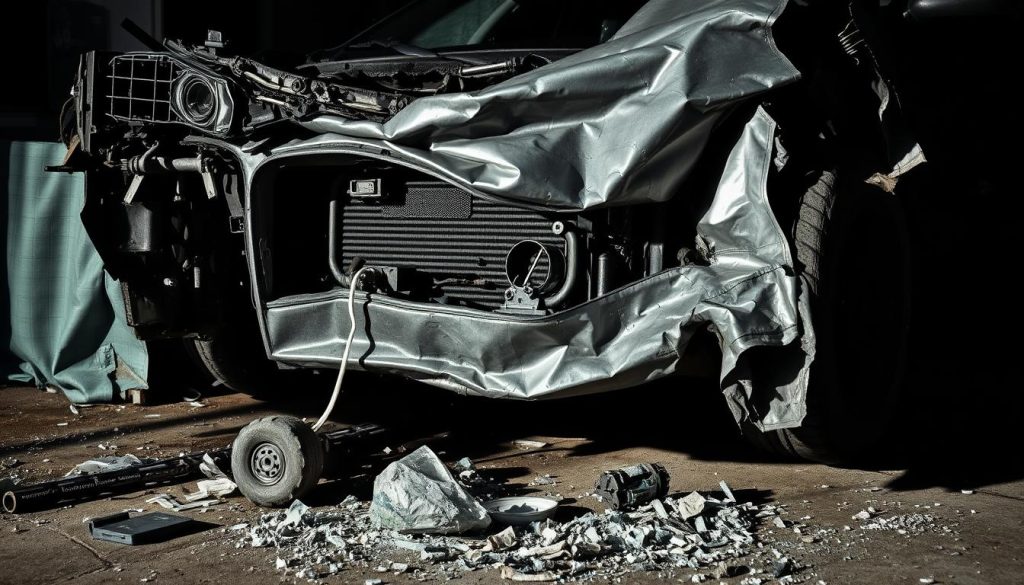
Importance of Professional Repairs
Professional repairs are crucial to restore your vehicle’s safety and performance. Experts have the necessary training and equipment to identify and fix damages that may not be visible to the untrained eye.
Moreover, professional repairs ensure that your vehicle is restored to its pre-collision state, maintaining its safety features and preventing potential hazards on the road.
Check for Recalls and Safety Notices
It’s also essential to check if your vehicle has been subject to any recalls or safety notices. This can be done by contacting the manufacturer or checking with the National Highway Traffic Safety Administration (NHTSA).
Staying informed about recalls and safety notices can help prevent further damage or injury, ensuring your vehicle remains safe to drive.
- Verify your vehicle’s recall status on the NHTSA website.
- Contact your vehicle’s manufacturer for more information on recalls and safety notices.
- Keep records of any repairs or checks related to recalls.
Dealing with Diminished Value
Collision damage can lead to a reduction in your vehicle’s value, a concept known as diminished value. Even if your vehicle is fully repaired, its value may still be lower than it was before the collision. This reduction in value is something that vehicle owners should be aware of when dealing with the aftermath of a collision.
What is Diminished Value?
Diminished value refers to the loss in a vehicle’s value after it has been involved in a collision and repaired. This loss occurs because potential buyers are often wary of purchasing a vehicle that has been in an accident, even if it has been properly repaired. The key factors that contribute to diminished value include the severity of the collision, the quality of the repairs, and the vehicle’s overall condition before the accident.
There are several types of diminished value, including:
- Immediate Diminished Value: The difference in the vehicle’s value immediately before and after the collision.
- Inherent Diminished Value: The reduction in value due to the fact that the vehicle has been in a collision, regardless of the quality of repairs.
- Repair-Related Diminished Value: The decrease in value resulting from poor or inadequate repairs.
How to Calculate Diminished Value
Calculating diminished value involves assessing the vehicle’s condition before and after the collision. One common method used is the 17c Diminished Value Formula, which takes into account the vehicle’s value before the collision, the severity of the damage, and the quality of the repairs.
The steps to calculate diminished value using this formula are:
- Determine the vehicle’s pre-collision value.
- Assess the severity of the damage.
- Calculate the diminished value based on the formula.
It’s also important to note that calculating diminished value can be complex and may require the expertise of a professional appraiser or an insurance adjuster. They can provide a more accurate assessment of the vehicle’s diminished value.
Preventive Measures Post-Collision
Ensuring your vehicle’s safety post-collision involves several key steps that can prevent further damage. After an accident, it’s crucial to take proactive measures to maintain your vehicle’s safety and performance. This not only helps in preventing further damage but also ensures that your vehicle remains safe to drive.
Tips to Ensure Vehicle Safety
To ensure vehicle safety post-collision, several tips can be followed:
- Checking fluid levels regularly is crucial as low levels can lead to serious engine damage.
- Tire pressure should be checked frequently as underinflated tires can lead to reduced traction and increased risk of a blowout.
- Ensuring that all lights and signals are functioning properly is vital for safety on the road.
Regular checks on these aspects can significantly enhance your vehicle’s safety.
Regular Maintenance Checks
Regular maintenance checks are vital after a collision. These checks can help identify any potential issues early on, preventing them from becoming major problems.
It’s recommended to have a professional mechanic inspect your vehicle thoroughly, paying special attention to critical car parts such as the suspension and steering system. Regular maintenance checks can include:
- Inspecting the brake system for any signs of wear or damage.
- Checking for any signs of leakage or damage to the fuel system.
- Ensuring that the battery and electrical systems are functioning correctly.
By following these preventive measures and maintaining a regular check on your vehicle’s condition, you can ensure that your vehicle remains safe to drive and its longevity is maintained. The repair process, when needed, should be handled by professionals to ensure that all repairs are done correctly and safely.
Understanding the Timeline
After a collision, understanding the timeline for repairs is crucial for planning and managing expectations. The extent of the damage and the availability of parts are key factors that influence the overall duration of the repair process.
Several steps are involved in the repair process, from initial assessment to final repairs. Typically, the process includes:
- Inspection and damage assessment
- Obtaining necessary approvals from insurance adjusters
- Sourcing and ordering required parts
- Performing the actual repairs
Expected Timeline for Repairs
The expected timeline can vary significantly. For minor collisions, repairs might take only a few days, while more extensive damage could require several weeks or even months to repair.
Factors influencing the timeline include:
- The severity of the collision damage
- The availability of necessary parts
- The workload of the repair shop
Delays and Their Causes
Delays in the repair process can be frustrating. Common causes include waiting for parts to be ordered and delivered, delays in adjuster approvals, and unforeseen complications during the repair work.
To mitigate these delays, it’s essential to maintain open communication with the repair shop and insurance company. Regular updates can help manage expectations and ensure a smoother repair process.
Emotional Impact of Collisions
A collision can be a traumatic experience, leaving vehicle owners feeling stressed and emotionally challenged. The loss of a vehicle, even temporarily, can disrupt daily routines and cause significant distress.
Coping Mechanisms
Seeking support from professionals, such as counselors or support groups, can help individuals cope with the emotional impact of a collision. Focusing on the repair process and getting back on the road can also provide a sense of control and normalcy.
Restoring Your Vehicle
When dealing with collision damage to your car parts, it’s essential to choose a reliable repair service. Miracle Body and Paint, with two locations in San Antonio, is equipped to handle collision repair damage, restoring your vehicle to its original condition.
By entrusting your vehicle’s repair to professionals, you can alleviate some of the emotional burdens associated with collision damage. Contact Miracle Body and Paint to get your vehicle back on the road safely and efficiently.

